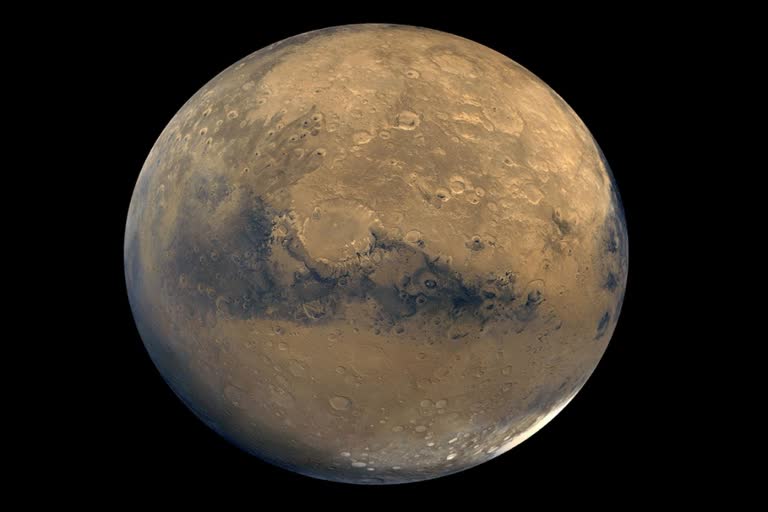Washington: A significant portion of Mars' water, between 30 and 99 percent, is trapped within minerals in the planet's crust, says a new study.
The research, published in the journal Science, challenges the current theory that the Red Planet's water escaped into space.
The research team from California Institute of Technology (Caltech) and NASA's Jet Propulsion Laboratory (JPL) found that around four billion years ago, Mars was home to enough water to have covered the whole planet in an ocean about 100 to 1,500 metres deep; a volume roughly equivalent to half of Earth's the Atlantic Ocean.
But, by a billion years later, the planet was as dry as it is today.
Previously, scientists seeking to explain what happened to the flowing water on Mars had suggested that it escaped into space, a victim of Mars's low gravity.
Though some water did indeed leave Mars this way, it now appears that such an escape cannot account for most of the water loss.
"Atmospheric escape does not fully explain the data that we have for how much water actually once existed on Mars," said lead author of the study Eva Scheller, a PhD candidate at Caltech in the US.
The team studied the quantity of water on Mars over time in all its forms (vapour, liquid, and ice) and the chemical composition of the planet's current atmosphere and crust through the analysis of meteorites as well as using data provided by Mars rovers and orbiters, looking in particular at the ratio of deuterium to hydrogen (D/H).
"Atmospheric escape clearly had a role in water loss, but findings from the last decade of Mars missions have pointed to the fact that there was this huge reservoir of ancient hydrated minerals whose formation certainly decreased water availability over time," said study coauthor Bethany Ehlmann, Professor at California Institute of Technology.
"All of this water was sequestered fairly early on, and then never cycled back out," Scheller said.
The research, which relied on data from meteorites, telescopes, satellite observations, and samples analysed by rovers on Mars, illustrates the importance of having multiple ways of probing the Red Planet, she said.
Also Read: Snapchat launched a new entertainment platform, Spotlight in India
(Inputs from IANS)



